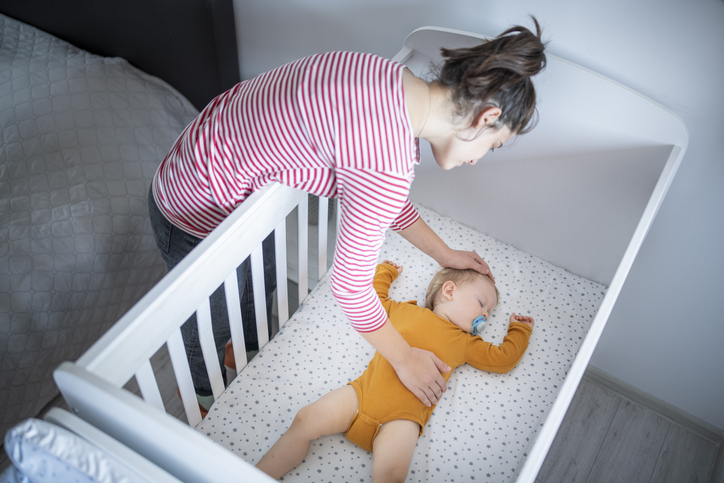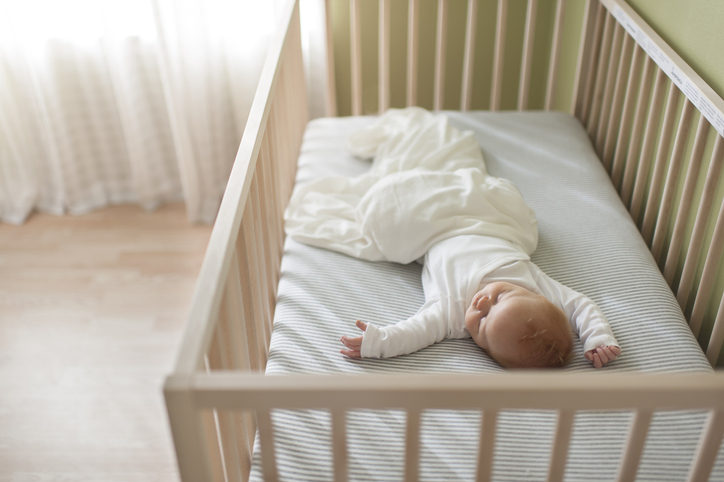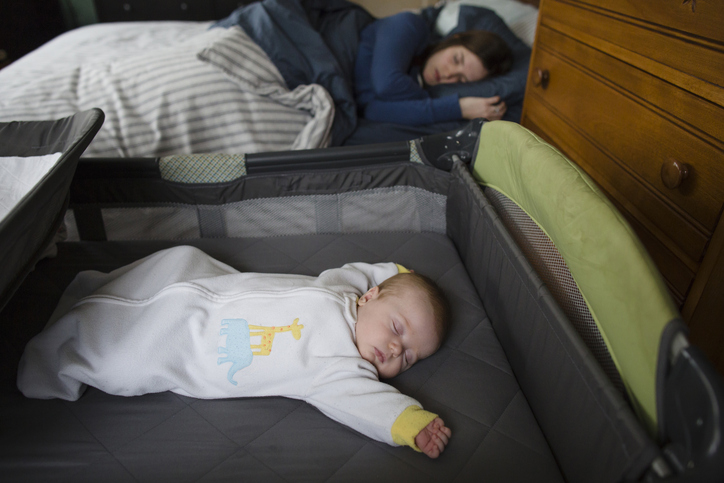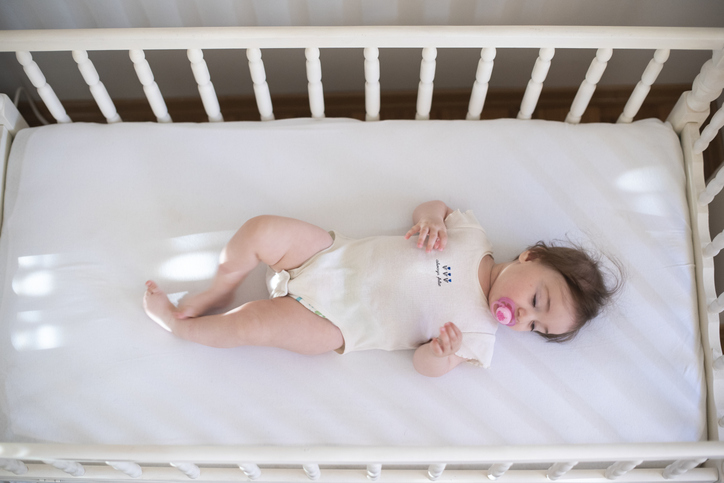
Each year in the United States, thousands of infants die suddenly and unexpectedly, leaving their heartbroken families searching for answers. Many of these tragic losses are attributed to Sudden Infant Death Syndrome (SIDS), a condition in which an otherwise healthy baby passes away without an identifiable cause.
Since the 1990s, when back-sleeping recommendations for infants were introduced and public awareness campaigns gained traction, the SIDS rate has steadily declined. Even so, Sudden Infant Death Syndrome remains the leading cause of death in babies between one and 12 months of age. Premature and low-birth-weight babies are especially at risk.
While the exact cause of SIDS is not fully understood, research suggests that a combination of biological and environmental factors may be at play. Additionally, other sleep-related hazards, such as accidental suffocation, entrapment and strangulation during sleep, continue to pose serious risks to infants.
At Tampa General Hospital, we are committed to educating parents, family members, caregivers and childcare providers on safe sleep practices to help reduce the risk of sleep-related infant deaths. As an academic health system and nationally recognized leader in high-risk obstetrics, we provide the highest level of care for women and babies through our renowned Women’s Institute.

The ABCs of Safe Sleep
To help reduce the risk of Sudden Infant Death Syndrome and other sleep-related hazards, TGH recommends following the ABC's of Safe Sleep to create a safe sleep environment for your baby.
A – Alone – Your Baby Should Always Sleep Alone
No one should ever sleep in the same bed, couch, or chair with an infant. This applies to twins and other multiples. Instead, your baby should sleep alone in a crib, bassinet, cradle or pack-and-play that meets the safety standards established by the Consumer Product Safety Commission (CPSC). Never place your baby on a sleep surface that is broken, missing parts, recalled or outfitted with dropping side rails, which were banned from sale and resale in the United States in 2011.
It is important to note that sleeping alone does not mean being alone. Although bed-sharing is strongly discouraged, room-sharing is recommended by the American Academy of Pediatrics (AAP). Until your baby reaches 12 months of age, it is preferable to position their sleep surface next to your bed, if possible. Close proximity between parent and newborn can promote bonding and make it easier for the parent to feed, comfort and care for the child at night.
B – Back – Your Baby Should Always Sleep on Their Back
Always place your infant on their back—never their stomach or side—for naps and sleeping at night, even if they have reflux or frequently spit up. Once your baby learns to roll over—a developmental milestone typically achieved between four and seven months of age—there is no need to reposition them during sleep. Numerous studies show that back sleeping is the safest way to reduce the risk of sleep-related infant deaths.
On the other hand, awake tummy time is important to facilitate your baby’s motor skill development, strengthen their neck and back muscles and minimize their risk of flat head syndrome (positional plagiocephaly). Shortly after your infant is discharged from the hospital, you can begin placing them on their stomach for short periods while they are awake and supervised. Gradually increase your baby’s tummy time, aiming for 15 to 30 minutes per day by the time they reach seven weeks of age.
C – Crib – Your Baby Should Always Sleep in a Flat Crib
Your baby’s sleep surface should be firm, flat and designed specifically for infants, such as a crib mattress covered with a fitted sheet. If they fall asleep in an infant carrier, sling, car seat, stroller or swing, move them to a crib as soon as possible.
To reduce the risk of breathing difficulties and suffocation during sleep, be sure to remove all pillows, quilts, sheepskin, bumper pads, stuffed animals, toys and other loose items from your infant’s sleep area before putting them down. Instead of covering your baby with a blanket, dress them in a lightweight, long-sleeved sleeper onesie or a sleep sack to help keep them comfortable but not too warm. Excess warmth and sweating during sleep can cause tossing and turning.

Why Does Breastfeeding Reduce SIDS?
Breastfeeding offers numerous benefits for both babies and their mothers, including reduced risk of Sudden Infant Death Syndrome. Several factors may contribute to this protective effect, including:
- Enhanced arousal response – Breastfed babies tend to wake up more easily from sleep, reducing the chance of prolonged pauses in breathing or other dangerous sleep-related events.
- Improved immune function – Breast milk contains antibodies and immune-boosting properties that help protect against infections, which are believed to increase the risk of SIDS.
- Lower risk of gastrointestinal issues – Breastfed infants have fewer digestive problems, reducing the likelihood of reflux-related breathing difficulties that may contribute to SIDS.
- Optimal respiratory and cardiovascular development – Breastfeeding supports the healthy development of the baby’s respiratory and cardiovascular systems, helping to regulate breathing patterns and heart function.
- Reduced inflammation and infections – Breastfeeding lowers the risk of respiratory and gastrointestinal infections, which have been linked to an increased risk of SIDS.
The AAP recommends breastfeeding for at least six months to maximize its protective benefits against Sudden Infant Death Syndrome. According to studies, the longer you exclusively breastfeed your baby, the lower their risk of SIDS. Even partial breastfeeding provides some risk reduction compared to formula feeding alone.
Can Babies Sleep With a Pacifier?
Researchers believe pacifier use may promote safer sleeping conditions and reduce the risk of Sudden Infant Death Syndrome by:
- Encouraging a favorable sleep position – Babies who use a pacifier are more likely to sleep on their back, which is the safest sleep position for infants.
- Improving reflexes – Sucking on a pacifier may support the development of healthy breathing and swallowing reflexes, which can be protective against SIDS.
- Maintaining an open airway – Pacifier use may help keep the baby’s respiratory tract open, reducing the likelihood of airway obstruction.
- Preventing heavy slumber – Sucking on a pacifier may prevent very deep sleep, making it easier for the infant to wake up if they experience breathing difficulties.
- Reducing the risk of suffocation – Pacifier use may discourage behaviors that can increase the baby’s risk of SIDS, such as rolling onto their stomach or covering their face with bedding.
In light of these potential benefits, the AAP recommends offering your infant a pacifier at naptime and bedtime once breastfeeding is well established. However, if your baby refuses the pacifier, you should not force it.

Safe Sleep Resources
For more information on promoting safe sleep for babies and reducing the risk of Sudden Infant Death Syndrome, TGH recommends the following resources:
- American Academy of Pediatrics – News, Health Alerts and Recalls
- American Academy of Pediatrics –SUID and Safe Sleep Overview
- National Institute of Health (NIH) Safe Sleep Campaign
- JPMA Cares Baby Safety University
Safe Sleep Videos
In these videos from Cribs for Kids®, a safe-sleep education and distribution program for families, experts explain the basics of safe sleep and why it is important to ensure a safe sleep environment for babies:
- What Is Safe Sleep?
- What Is Safe Sleep? - Spanish
- Co-Sleeping Is Dangerous
- Co-Sleeping Is Dangerous - Spanish
- Stay Awake While Caring For Your Baby
- Stay Awake While Caring for Your Baby - Spanish
Supporting Safe Sleep for Every Baby
Creating a safe sleep environment is an essential step in reducing the risks of Sudden Infant Death Syndrome and other sleep-related hazards for infants. Tampa General Hospital remains dedicated to empowering families with evidence-based practices and resources to ensure every child thrives. For additional support and expert care, we encourage you to connect with the TGH Women’s Institute, where our specialists are ready to partner with you in creating a safe and healthy future for your child.
